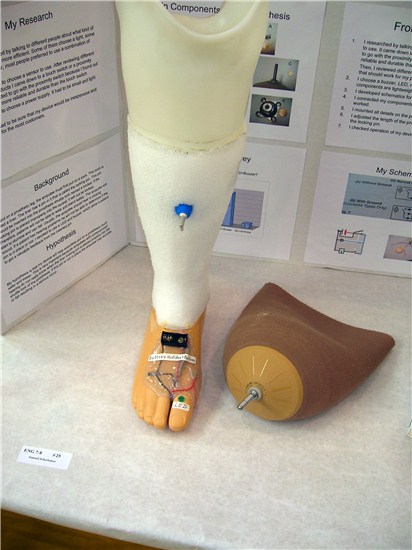Teaching Biomedical Engineering
Most students that participate in a regional science fair are already very passionate about their project and are very excited about the opportunities involved. Unfortunately, many students can become overwhelmed very quickly when working on a project. There can be a lot of work involved, and many students will choose projects that they actually know very little about. This can create a difficult situation for teachers, especially when the majority of projects will involve some type of biomedical engineering.
At ABIA, we realize that all teachers are experts in certain fields, but also understand that not all teachers are experts in biomedical engineering. Therefore, if you are looking for quick advice, materials to use, simple answers for students, or even some needed encouragement over the next few months, you have come to the right place!
We want to make it very clear that as a teacher, you are very important for the success of BEST Medicine. As you already know, you are also largely responsible for the success of your students and their projects. We know that your students will come to you with questions and concerns about their projects. Therefore, we recognize that it is absolutely crucial for you to be knowledgeable, well prepared, and ready to teach lessons covering biomedical engineering topics and material.
Since you are the teaching expert, you already know how to best communicate with your students. However, we do not want you to feel alone. Therefore, we have created this website to help guide you with lesson plans, teacher workshops, and other useful resources that will make BEST Medicine simple, easy, and exciting for you as a teacher!
Getting Your Students Started
Creating enthusiasm for science projects can be challenging when interacting with students. An easy way to introduce concepts related to science and biomedical engineering is to devote time with students and show them how interesting biomedical innovation can be. Creating a sense of wonderment will inspire students to actively seek the challenge of not only invention, but of documenting their projects.
As a teacher, you are responsible for motivating, encouraging and advising students; signing and distributing appropriate forms; directing the preliminary discussion about inventors and inventions; and maintaining students’ enthusiasm about their projects.
The following are a few simple steps you can take to help your students become involved in the BEST Medicine Engineering Fair, and in biomedical engineering.
Step I: Introduce Biomedical Innovation to your Students
BEST Advice: Stay enthusiastic!
The first step toward encouraging budding scientists in your class is to introduce some of the biomedical inventions that we take for granted every day. Describe what life would be like without them. Each invention can become a structured conversation allowing students to guess the rationale and benefits of the invention.
The following are a few examples of medical inventions that can be used to begin your own conversation with your students:
- Antibiotics
- Wheelchairs
- Prosthetic Devices
Keep in mind that not every invention leads to a new product. A process or a better way of doing something can be an invention as well. To illustrate this concept, show your students examples of process-based inventions. You can also take a hands-on approach, and let your students use household items to model complex biological and medical scenarios!
Step II: Help Students Find Their Areas of Interest, and Identify Their Project
 BEST Advice: Keep an open mind, and let the creativity flow!
BEST Advice: Keep an open mind, and let the creativity flow!
Remember, your students will be working on their projects for a long time before they are ready to present at the BEST Medicine fair, so it’s important to make sure they are interested in their project’s topic!
You can use the list of resources provided within this site to help your students identify what topics they like, and what they dislike. Don’t let your students give up if they have trouble finding a topic that interests them. Biomedical science covers a huge range of topics, and there are millions of books, website, and other resources out there to help you find the right project for each and every one of your students.
Click here for over 100 possible Project Ideas.
Step III: Become the Facilitator
BEST Advice: You can never remind students of deadlines too many times!
Once your students have been engaged, review the BEST Medicine handbook and give your students a timeline, with which they can work, to finish their project on time. Remind them of documents like the Parent’s Letter so that they have everything they need, come science fair day.
Don’t forget to mention the Awards that students can win at the end of the competition, to keep the hard work rolling!
Next Step: Download the 2013 BEST Medicine Student Handbook and Rules and Regulations and Student Application. Click on the “How to Apply” tab to learn more.



 BEST Advice: Keep an open mind, and let the creativity flow!
BEST Advice: Keep an open mind, and let the creativity flow!